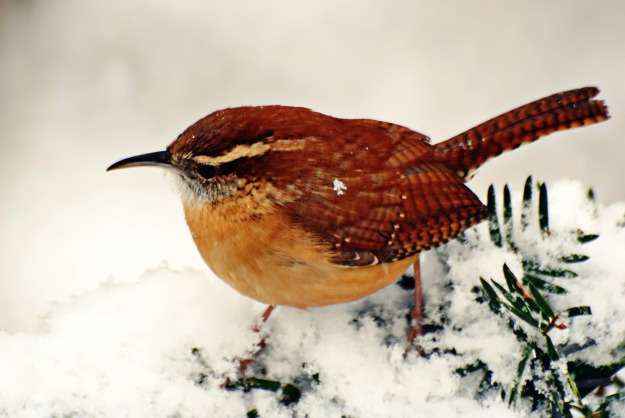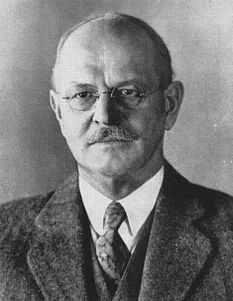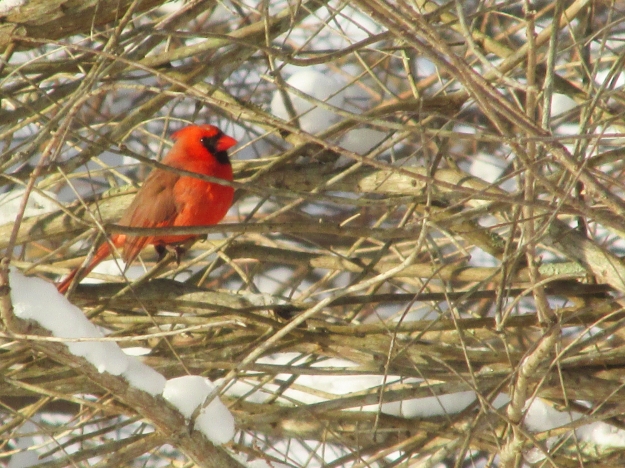
Photo by RetyiRetyi/Pixabay.com • Carolina wrens are small, inquisitive and hardy songbirds. The recent Elizabethton Christmas Bird Count found a record number of this wren during its annual survey of bird populations.
I participated in the 76th consecutive Elizabethton Christmas Bird Count, which was held Saturday, Dec. 15. This annual count is one of the oldest Christmas Bird Counts in the region, as well as in Tennessee.
I was one of twenty-eight observers in six parties. Together, we tallied 77 species, which is above the recent 30-year average of 72 species. The all-time high was set last year when 85 species were counted on this annual survey.

Photo by Bryan Stevens • An osprey perches in a tree along the Watauga River in Elizabethton, Tennessee. These fish-eating raptors are rare in winter in Northeast Tennessee.
Two species — osprey and orange-crowned warbler — were found on this CBC for the first time. Longtime count compiler Rick Knight observed that one noticeable difference between last year’s count and the 2018 Elizabethton CBC was the number of ducks. Last year’s CBC yielded 13 species, but only six species of ducks were found this year.
Knight also noted that a record number — 139 — of Carolina wrens was spotted by CBC participants.
A single bald eagle was found, but it was enough to continue a recent trend. This eagle has appeared for 19 of the last 20 on the Elizabethton CBC. Counts more than 20 years ago rarely produced any bald eagles.
A single red-shouldered hawk represented a good find since this hawk has only been found on six of the previous 25 years. A single merlin represented an even more exceptional find for this CBC. Merlin has been represented only two times in the last 25 years for this particular count.

Photo by Bryan Stevens • This captive red-shouldered hawk was rehabilitated after suffering an injury and now works in an educational program at Brookgreen Gardens in South Carolina to teach the public about raptors, other birds, and various types of wildlife.
Knight noted that two shorebirds — killdeer and Wilson’s snipe — have experienced a steady decline in making this annual count. This year’s count produced only a single killdeer and snipe.
Knight speculated that low numbers of cedar waxwings and American robins on this year’s CBC probably indicates a poor wild fruit crop. These two species depend heavily on fruit to supplement their diet during the winter months.
Chipping sparrow has now been found for 15 straight years, but had only previously been reported six times in the first 50 years of the history of the Elizabethton CBC.
Without fail, some species manage to evade counters. According to Knight, some of the conspicuous misses this year included ruffed grouse, common loon and barred owl.

Photo by Bryan Stevens • Although found during counts held in other seasons, no ruffed grouse was found on the 2018 Elizabethton Christmas Bird Count.
The Elizabethton Bird Club has been holding its annual Christmas count in Elizabethton, Tennessee, since 1942. The tradition of the Christmas Bird Count dates back much farther and originates from a less than bird-friendly custom. According to the National Audubon Society’s website, so-called sportsmen in the late 19th century would conduct a “Side Hunt,” a rather blood-thirsty Christmas custom that saw hunters competing to see who could score the largest amount of feathered and furred corpses.
The annual holiday bird survey may even have arisen from an earlier custom with roots in Europe that came to the United States of America with early colonists. The “Side Hunt” has some similarity to a peculiar celebration in Ireland and other European countries known as “Wren Day” or “Hunt the Wren Day.” The event was conducted the day after Christmas, the date of Dec. 26 being consigned as Saint Stephen’s Day. By the 20th century, the hunt consisted of tracking down a fake wren carried atop a decorated pole. Crowds would parade through towns in masks and colorful attire. These groups were referred to as “wren boys.”
Whether or not the “Side Hunt and “Wren Hunt” shared any connections, it was a huge step forward for conservation when preeminent ornithologist Frank M. Chapman proposed a new holiday tradition. His radical idea was to count birds during the Christmas season rather than hunting and killing them

Frank M. Chapman
The Christmas Bird Count is now conducted each year on dates between Dec. 14 and Jan. 5. The first CBC took place in December of 1900 with 27 observers participating at 25 locations in the United States and Canada. Fifteen of the counts were conducted in the northeastern United States from Massachusetts to Philadelphia. Results from that first count in 1900 didn’t truly reflect the diversity of North America’s birds, but they were nonetheless interesting. The Greater Boston CBC boasted only one participant and only found 17 species. However, some of those species included such good birds as American tree sparrow, brown creeper, Northern shrike and Northern bobwhite.
For me, the Christmas Bird Count is a fun holiday outing with friends. There’s also satisfaction in knowing the results gathered from these nationwide counts will also contribute to the body of citizen science that helps experts determine the status of our feathered friends.
For a complete tally of this year’s Elizabethton Christmas Bird Count, please see the online sidebar to this week’s column at HeraldCourier.com.
Elizabethton Christmas Bird Count
Canada goose, 459; wood duck, 1; American wigeon, 1; American black duck, 1; mallard, 150; bufflehead, 182; and hooded merganser, 11.
Wild turkey, 57; pied-billed grebe, 16; horned grebe, 11; double-crested cormorant, 1; and great blue heron, 29.
Black vulture, 5; turkey vulture, 19; osprey, 1; sharp-shinned hawk, 1; Cooper’s hawk, 4; bald eagle, 1; red-shouldered hawk, 1; and red-tailed hawk, 17.

Photo by Bryan Stevens • Wilson’s snipe are not often found in the winter in Northeast Tennessee.
American coot, 1; killdeer, 1; Wilson’s snipe, 1; and ring-billed gull, 14.
Rock pigeon, 296; Eurasian collared-dove, 4; mourning dove, 126; Eastern screech-owl, 4; and great horned owl, 2.
Belted kingfisher, 21; red-bellied woodpecker, 26; yellow-bellied sapsucker, 11; downy woodpecker, 30; hairy woodpecker, 4; Northern flicker, 25; and pileated woodpecker, 20.
American kestrel, 16; merlin, 1; Eastern phoebe, 11; blue jay, 128; American crow, 291; and common raven, 10.
Carolina chickadee, 80; tufted titmouse, 72; red-breasted nuthatch, 1; white-breasted nuthatch, 29; and brown creeper, 10.
Winter wren, 4; Carolina wren, 139; golden-crowned kinglet, 38; and ruby-crowned kinglet, 15.
Eastern bluebird, 122; hermit thrush, 7; American robin, 17; brown thrasher, 1; and Northern mockingbird, 50.

Photo by Bryan Stevens • The Northern Mockingbird has been the official state bird for Tennessee since 1933.
European starling, 592; cedar waxwing, 30; orange-crowned warbler, 1; palm warbler, 1; and yellow-rumped warbler, 32.
Eastern towhee, 22; chipping sparrow, 29; field sparrow, 34; Savannah sparrow, 4; fox sparrow, 3; song sparrow, 129; swamp sparrow, 8; white-throated sparrow, 70; white-crowned sparrow, 20; and dark-eyed junco, 66.
Northern cardinal, 159; red-winged blackbird, 25; Eastern meadowlark, 4; house finch, 34; American goldfinch, 46; and house sparrow, 8.

Photo by Bryan Stevens • A total of 159 Northern cardinals made this species a common bird on the recent Elizabethton CBC.

Reblogged this on Wolf's Birding and Bonsai Blog.
LikeLike
Very nice blog and pictures
LikeLiked by 1 person